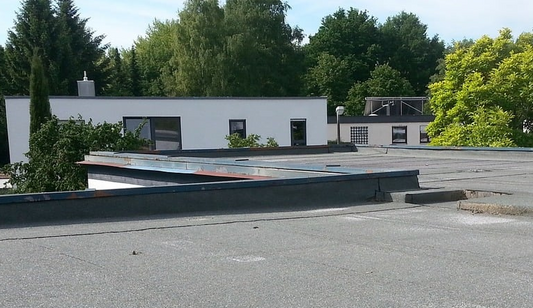DIY EPDM rubber roofing kits give you significant savings by slashing labour costs and bundling all you need for installation, minimising materials wasteage, making them a practical choice for a one time project.
Key Points
- DIY EPDM kits save significant labour costs and provide all necessary installation materials.
- They offer a flexible, convenient solution for personal roofing projects, enhancing DIY skills.
- Installation can be technically complex, requiring precise measurement and material application.
What Are EPDM Rubber Roofing Kits?
EPDM rubber roofing kits are your complete, ready-to-install package for tackling flat roofing projects on your own.

These kits come pre-packaged with everything you'll need to successfully install an EPDM rubber roof, tailored to fit various roof sizes and configurations. Whether you're dealing with a small garage or a larger residential flat roof, there's a kit that matches your project's specific requirements.
Each kit typically includes the EPDM membrane itself, adhesives, sealants, specialized tape, flashing, and the necessary installation tools.
You won't be left guessing at any step, as detailed installation instructions are also provided. These guides help you navigate through each stage of the installation process, ensuring you can manage the project with confidence.
With these kits, you're not just buying materials; you're also gaining the freedom to control the timeline and execution of your roofing project.
This do-it-yourself approach not only saves you the cost of professional labour but also empowers you to take direct responsibility for the upkeep and protection of your home.
EPDM Roofing Kits : The Pro's
- You'll get pretty much everything you need for your project
- Ideal for DIY projects such as outbuilding, shed and garage roofs
- Saves on material wasteage (Eco friendly too as very little left over to dispose of)
EPDM Roofing Kits: The Cons
- You may need extra materials (such as trims and flashings) if your project is a little complex or irregular in it's design.
- You may pay slightly more for the privilege of having everything packaged together for you.
- Not advised for complex projects or critical parts of your home
Installation Challenges and Solutions
To avoid these pitfalls, it's vital to start with a clean, dry, and debris-free surface.
Any moisture or dirt can weaken the adhesive's bond, which is essential for a watertight seal, so take your time to prepare the roof thoroughly before starting the actual installation process.
You'll also benefit greatly from thoroughly reading or watching installation guides and tutorials specific to your kit.Don't skip this step; knowing what you're doing beforehand can save you a lot of time and effort.
Lastly, always adhere strictly to the manufacturer's instructions included with your kit.
These are tailored to your specific product and are critical for ensuring your installation is done correctly.
Types of EPDM Rubber Roof Kits
At Flat Roofing Systems, we supply a range of kits, each designed for specific applications:
Shed Kits: Starting at under £40, the Skyguard® Shed EPDM Rubber Roof Kit includes 1.00mm thick EPDM. and is designed for sheds and other storage outbuildings.
Garage Kits: ClassicBond EPDM Rubber Garage Roof Kits start from around £400 and include all trims and edges.
Porch Kits: ClassicBond EPDM Porch Roof Kits are the ultimate solution for flat porches with gutters along one long edge and a wall flashing adjacent to your house wall.
Garden Room Kits: ClassicBond EPDM Garden Room Roof Kits the perfect solution for free-standing garden rooms , include 1.2mm thick membrane and start from a little over £200.
Dormer Kits: ClassicBond EPDM Dormer Roof Kits include 1.2mm membrane and start from £157.
Rounding Up
EPDM rubber roofing kits are ideal for the competent DIYer to tackle certain types of project, such as garages, sheds, garden buildings and the like. For more critical & complex projects, such as the main parts of your house, we'd advise consulting a professional.




